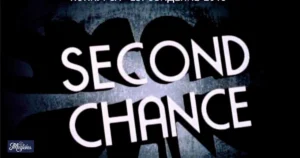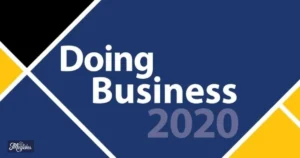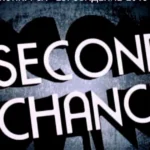“Clarity comes not just from what we say, but from how we say it.”
The phrase “as you can see” is a common expression used to guide readers or listeners to observations or conclusions. While it’s effective, relying too heavily on this phrase can make communication feel repetitive and unvaried.
In this blog post, we will explore 35 alternative ways to express the same sentiment. Each suggestion comes with a scenario, an explanation, and additional tips for effective use, allowing you to enhance your communication skills and keep your audience engaged.
By diversifying your language, you not only maintain the interest of your audience but also convey your points more effectively. Let’s dive into these alternatives and discover how to express observations with more flair and precision!
1. As You Can Observe
Scenario: During a presentation highlighting key data points.
Subject Explanation: This phrase indicates that the audience can directly see what you are referring to.
Additional Tip: Use it when discussing visual data or graphs.
2. As You May Notice
Scenario: When introducing findings in a report.
Subject Explanation: This expression suggests that the audience should pay attention to specific details.
Additional Tip: Ideal for formal contexts where polite language is preferred.
3. As You Will Notice
Scenario: In a meeting discussing project updates.
Subject Explanation: This phrase indicates that the audience is expected to acknowledge certain points.
Additional Tip: Use it to draw attention to new information.
4. As Illustrated
Scenario: When showing a diagram or image.
Subject Explanation: This expression indicates that what follows is clearly represented visually.
Additional Tip: Great for visual presentations.
5. As Evident From
Scenario: In an analysis of trends.
Subject Explanation: This phrase highlights clear evidence supporting a statement.
Additional Tip: Ideal for argumentative writing.
6. As Shown
Scenario: When referencing a chart or graph.
Subject Explanation: This expression indicates that the following information is backed by visual representation.
Additional Tip: Use it in scientific or technical contexts.
7. As Clearly Demonstrated
Scenario: In a speech about research findings.
Subject Explanation: This phrase emphasizes that the following information is unmistakable.
Additional Tip: Great for persuasive contexts.
8. As Displayed
Scenario: When showing results in a slideshow.
Subject Explanation: This expression indicates that information is presented for easy understanding.
Additional Tip: Use it when you have supporting visuals.
9. As You Might See
Scenario: When referring to specific examples.
Subject Explanation: This phrase suggests that the audience can easily relate to what is being discussed.
Additional Tip: Ideal for casual conversations.
10. As You’ll Find
Scenario: In a report about survey results.
Subject Explanation: This expression indicates that the audience will encounter particular findings.
Additional Tip: Use it in written documentation.
11. As Demonstrated By
Scenario: When discussing examples from a case study.
Subject Explanation: This phrase indicates that what follows is supported by clear examples.
Additional Tip: Great for educational contexts.
12. As Noted

Scenario: When summarizing important points.
Subject Explanation: This expression indicates that the audience should recall previous information.
Additional Tip: Ideal for formal communication.
13. As Depicted
Scenario: When referring to illustrations or images in a book.
Subject Explanation: This phrase indicates that the information is visually represented.
Additional Tip: Use it for artistic or literary discussions.
14. As You Can Observe
Scenario: When analyzing behaviors in a study.
Subject Explanation: This expression invites the audience to look closely at details.
Additional Tip: Great for academic writing.
15. As Seen In
Scenario: When referencing examples in a presentation.
Subject Explanation: This phrase indicates that the following information is illustrated by previous examples.
Additional Tip: Use it for comparative analyses.
16. As Demonstrated Here
Scenario: When showing results in a business meeting.
Subject Explanation: This expression indicates that the following points will be evidenced by what’s presented.
Additional Tip: Ideal for professional settings.
17. As Outlined
Scenario: In a summary of project objectives.
Subject Explanation: This phrase indicates that information has been previously detailed.
Additional Tip: Use it in structured documents.
Other Ways to Say “The End in a Story”
18. As Shown Here
Scenario: When presenting key findings on a slide.
Subject Explanation: This expression emphasizes that the information is available for viewing.
Additional Tip: Great for visual aids.
19. As Described
Scenario: When summarizing a process.
Subject Explanation: This phrase indicates that the information has been detailed earlier.
Additional Tip: Use it in instructional writing.
20. As Revealed By
Scenario: When discussing research outcomes.
Subject Explanation: This expression indicates that the following information uncovers specific findings.
Additional Tip: Ideal for analytical writing.
21. As Indicated
Scenario: When referring to results in a report.
Subject Explanation: This phrase suggests that the following information is based on evidence.
Additional Tip: Use it for formal reports.
22. As Mentioned Earlier

Scenario: When referring back to a previous statement.
Subject Explanation: This expression reminds the audience of earlier information.
Additional Tip: Great for reinforcing points.
23. As Highlighted
Scenario: When discussing crucial elements in a presentation.
Subject Explanation: This phrase indicates that the information has been emphasized.
Additional Tip: Use it for impactful discussions.
24. As Per Our Discussion
Scenario: In a follow-up email.
Subject Explanation: This expression refers to previously talked about points.
Additional Tip: Ideal for professional correspondence.
25. As Presented
Scenario: When summarizing content shared in a meeting.
Subject Explanation: This phrase indicates that the information has been formally shared.
Additional Tip: Use it in formal settings.
26. As Detailed
Scenario: When providing an overview of a project plan.
Subject Explanation: This expression indicates that specific information has been thoroughly explained.
Additional Tip: Great for reports and proposals.
27. As Underlined
Scenario: When emphasizing key aspects of a topic.
Subject Explanation: This phrase indicates that certain points are critical.
Additional Tip: Ideal for persuasive writing.
28. As Reflected In
Scenario: When analyzing trends over time.
Subject Explanation: This expression indicates that the following information correlates with certain data.
Additional Tip: Use it for analytical discussions.
29. As Can Be Observed
Scenario: In a scientific experiment summary.
Subject Explanation: This phrase suggests that the audience should take notice of specific details.
Additional Tip: Great for educational settings.
30. As Specified
Scenario: When detailing project requirements.
Subject Explanation: This expression indicates that the following information is exact.
Additional Tip: Use it in technical writing.
31. As Stated
Scenario: When quoting previous research.
Subject Explanation: This phrase indicates that the information has been previously articulated.
Additional Tip: Ideal for academic contexts.
32. As Highlighted In
Scenario: When referencing a study or publication.
Subject Explanation: This expression points to specific content that underscores key ideas.
Additional Tip: Use it in literature reviews.
33. As Confirmed By
Scenario: When validating information from reputable sources.
Subject Explanation: This phrase indicates that the following points are backed by authoritative evidence.
Additional Tip: Great for substantiating claims.
34. As Seen With
Scenario: When discussing common examples.
Subject Explanation: This expression indicates that the information is represented through examples.
Additional Tip: Use it for illustrative purposes.
35. As You Can Tell
Scenario: In a casual conversation to reinforce a point.
Subject Explanation: This phrase suggests that the audience should already be aware of certain details.
Additional Tip: Great for informal discussions.
Pros and Cons of Alternative Expressions
Pros
- Variety: Using different expressions keeps communication fresh and engaging.
- Precision: Each phrase can convey specific nuances tailored to the context.
- Clarity: Varied language helps in explaining concepts clearly.
Cons
- Context Sensitivity: Some phrases may not fit every situation or audience.
- Potential Confusion: Less familiar expressions might not be understood by everyone.
- Overuse Risk: Frequently used alternatives can lose their impact over time.
Conclusion
Exploring alternative expressions for “as you can see” not only enhances your vocabulary but also enriches your communication style. By choosing the right phrases, you can convey observations more effectively and keep your audience engaged.
Embrace these alternatives, and let your observations shine with clarity and precision!

Hi, I’m Isabel: I’m passionate about turning language learning into a fun adventure. I believe in making every word exciting and memorable.










